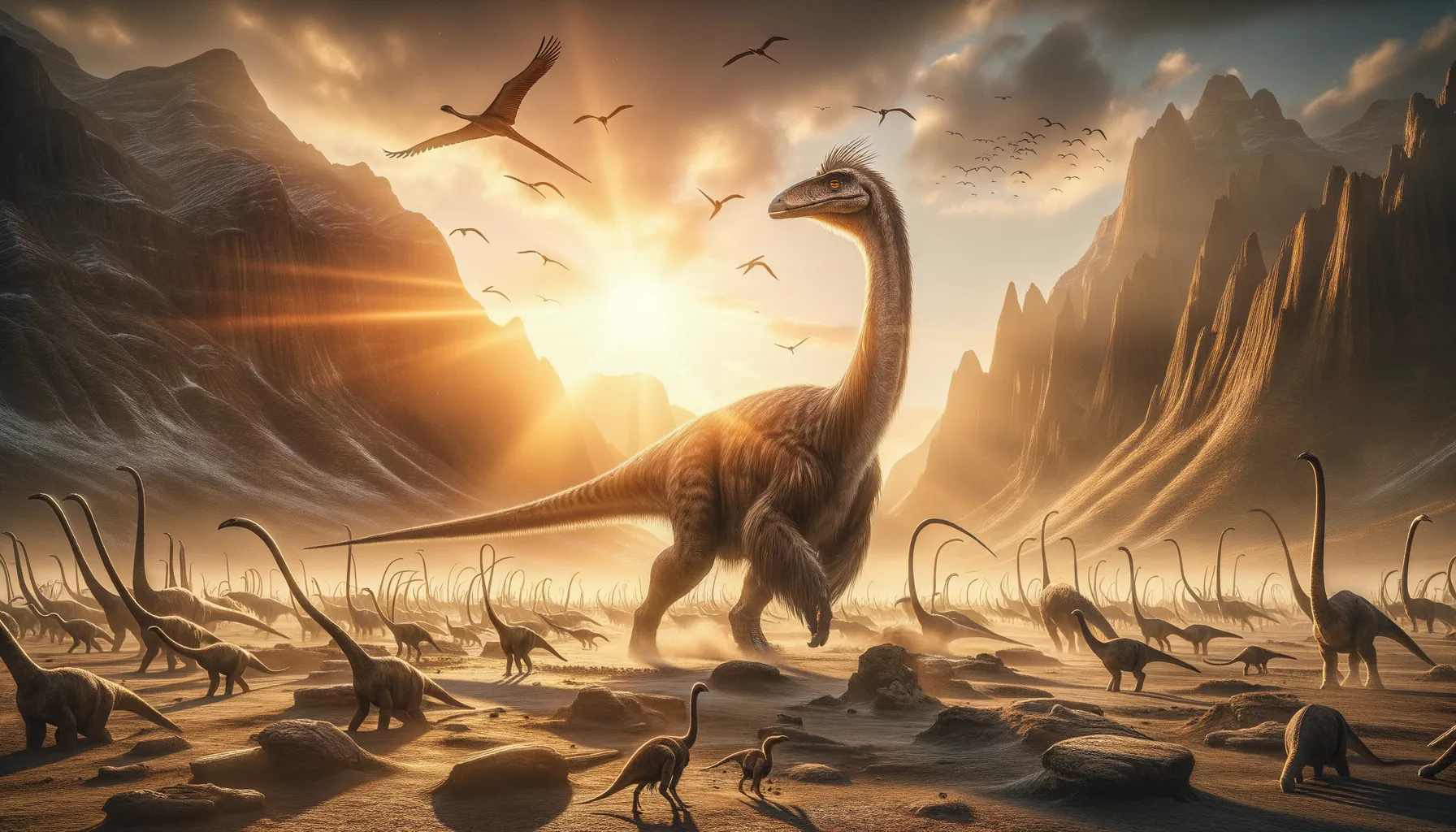
Garudimimus
A swift survivor of ancient times.
Period
Cretaceous
Length
Roughly 3.5 to 4 meters long.
Height
Approximately 1.8 meters tall.
Weight
About 100 to 200 kilograms.
Garudimimus was a dinosaur from the Late Cretaceous period known for its bird-like features and moderate size. It was an ornithomimosaur, a group characterized by their light build and long limbs, resembling modern ostriches. Discovered in the fossil-rich Gobi Desert, it provides valuable insights into the diversity of dinosaur life in Asia during its time. Although not a swift runner, Garudimimus was well-suited to its environment.
Diet
Garudimimus was likely omnivorous, meaning it could eat both plants and small animals. Its diet would have included leaves, fruits, insects, and possibly small vertebrates.
Hunting
As an omnivore, Garudimimus was not a specialized hunter but might have foraged for insects and small animals. It likely relied on its beak for pecking at food sources found in its habitat.
Environmental challenges
Garudimimus lived in a semi-arid environment where water and food could be scarce. Seasonal changes might have affected the availability of plants and small prey. Competition with other herbivorous and omnivorous species would have posed additional challenges in its ecosystem.
Speed
Moderate agility, not very fast.
Lifespan
Uncertain, typical for dinosaurs of its kind.
First discovery
Found in Mongolia's Gobi Desert in 1981.
Fun Facts
- Garudimimus means 'Garuda mimic', named after a bird-like creature from Hindu and Buddhist mythology, reflecting its bird-like features.
- This dinosaur lived around 90 million years ago during the Late Cretaceous period.
- Garudimimus was part of a group of dinosaurs known as theropods, which also includes famous predators like Tyrannosaurus rex, but Garudimimus was likely an omnivore.
- It had a beak-like mouth and a body built for speed, suggesting it could run quickly.
- Fossils of Garudimimus have primarily been found in Mongolia.
- Unlike many other theropods, Garudimimus may not have had true teeth, possibly relying on its beak to eat plants and small animals.
- Garudimimus was around 3.5 meters long, making it a medium-sized dinosaur of its time.
Growth and Development
Garudimimus might have hatched from eggs, growing rapidly during its early life to avoid predation. Like many dinosaurs, its growth could have been influenced by the availability of food and environmental conditions.
Habitat
Lived in open areas with sparse vegetation, typical of the Gobi Desert region. These areas offered limited cover, making it crucial for survival to have awareness of predators. Seasonal variations would have dictated food availability and water sources.
Interaction with other species
Likely coexisted with other dinosaurs, creating a complex ecosystem where species interacted through competition and cooperation. It might have shared its habitat with larger predators, necessitating vigilance. Garudimimus may have also interacted with other herbivorous dinosaurs, affecting its food resources.
Natural lifespan
Lifespan similar to other medium-sized dinosaurs.
Reproduction
Reproduced through laying eggs, likely in nests on the ground. The strategy of laying multiple eggs helped ensure survival despite risks from predators. Parental care details are unknown, but similar species may have provided basic protection for offspring.
Social behaviour
Garudimimus was probably a solitary creature or lived in small groups based on resource availability. Its interactions were likely limited to feeding and mating. Social structures, if present, would have ensured some level of group safety and collaborative foraging.
Fossil locations
Fossils of Garudimimus have been primarily discovered in the Gobi Desert of Mongolia. These finds have helped paleontologists understand the species' place in the Cretaceous ecosystem. The Gobi Desert is renowned for its rich deposits of dinosaur fossils.
